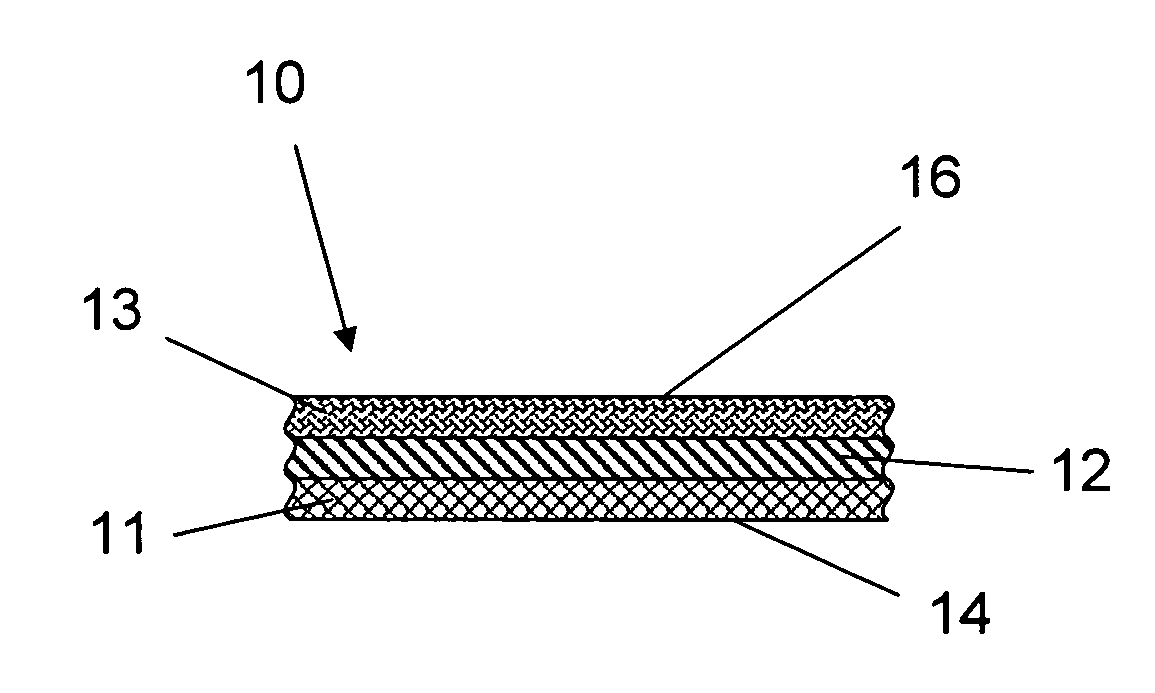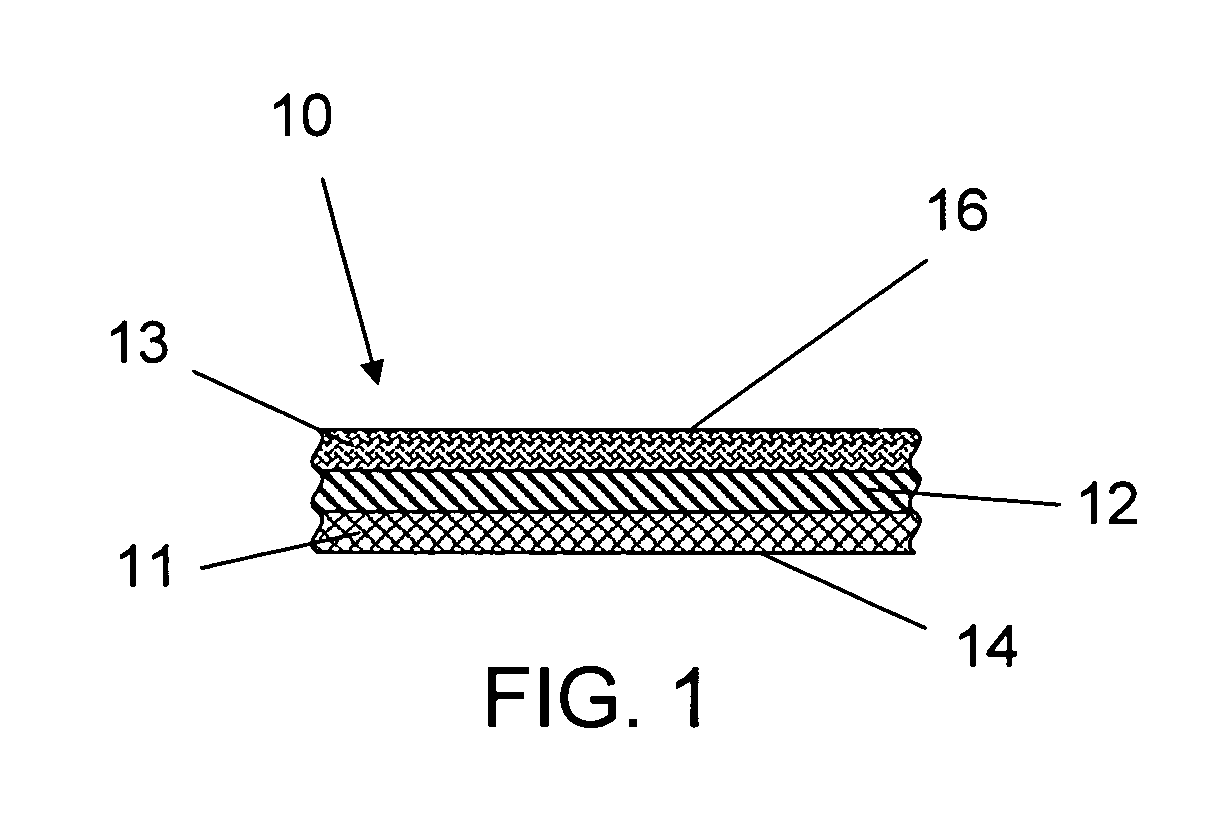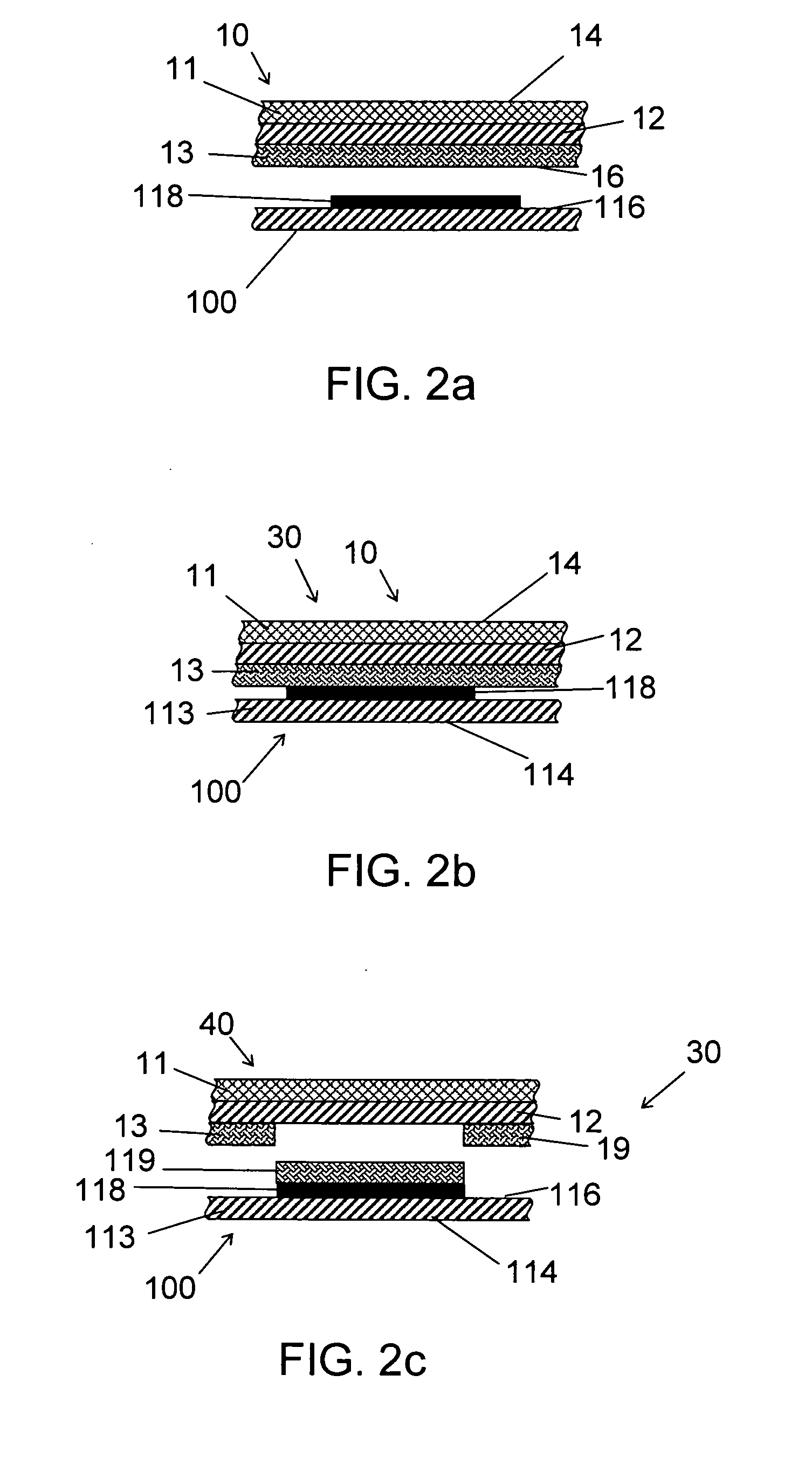Heat transfer masking sheet materials and methods of use thereof
a technology of heat transfer and masking sheet, applied in the direction of lithography, rotary lithographic machines, printing, etc., can solve the problem that the weeding process is difficult to perform
- Summary
- Abstract
- Description
- Claims
- Application Information
AI Technical Summary
Problems solved by technology
Method used
Image
Examples
examples
[0056] A first heat transfer masking sheet material was made having a base sheet of cellulosic fiber paper having a basis weight of 90 g / m2 (Supersmooth Classic Crest available from Neenah Paper, Inc., Alpharetta, Ga.). A conformable layer of a 6 g / m2 film of ethylene vinyl acetate (available as Elvax 3200 from DuPont Corporation of Wilmington, Del.) was extrusion coated on a surface of the base sheet. Overlaying the conformable layer was a release layer that included a mixture of 100 dry parts of hard acrylic latex (available as Rhoplex SP-100 from Rohm & Haas), 1 part of 28% ammonium hydroxide solution (available from EM Industries), 5 dry parts of aziridine crosslinking agent (available as XAMA 7 from Sybron Chemicals, Inc. of Birmingham, N.J.), 3 dry parts of nonionic surfactant (available as Triton X100 from The Dow Chemical Company), and 10 dry parts of 8000 molecular weight polyethylene oxide (available as Carbowax 8000 from The Dow Chemical Company) coated on the base substr...
PUM
| Property | Measurement | Unit |
|---|---|---|
| Temperature | aaaaa | aaaaa |
| Pressure | aaaaa | aaaaa |
| Melting point | aaaaa | aaaaa |
Abstract
Description
Claims
Application Information
 Login to View More
Login to View More - R&D
- Intellectual Property
- Life Sciences
- Materials
- Tech Scout
- Unparalleled Data Quality
- Higher Quality Content
- 60% Fewer Hallucinations
Browse by: Latest US Patents, China's latest patents, Technical Efficacy Thesaurus, Application Domain, Technology Topic, Popular Technical Reports.
© 2025 PatSnap. All rights reserved.Legal|Privacy policy|Modern Slavery Act Transparency Statement|Sitemap|About US| Contact US: help@patsnap.com



